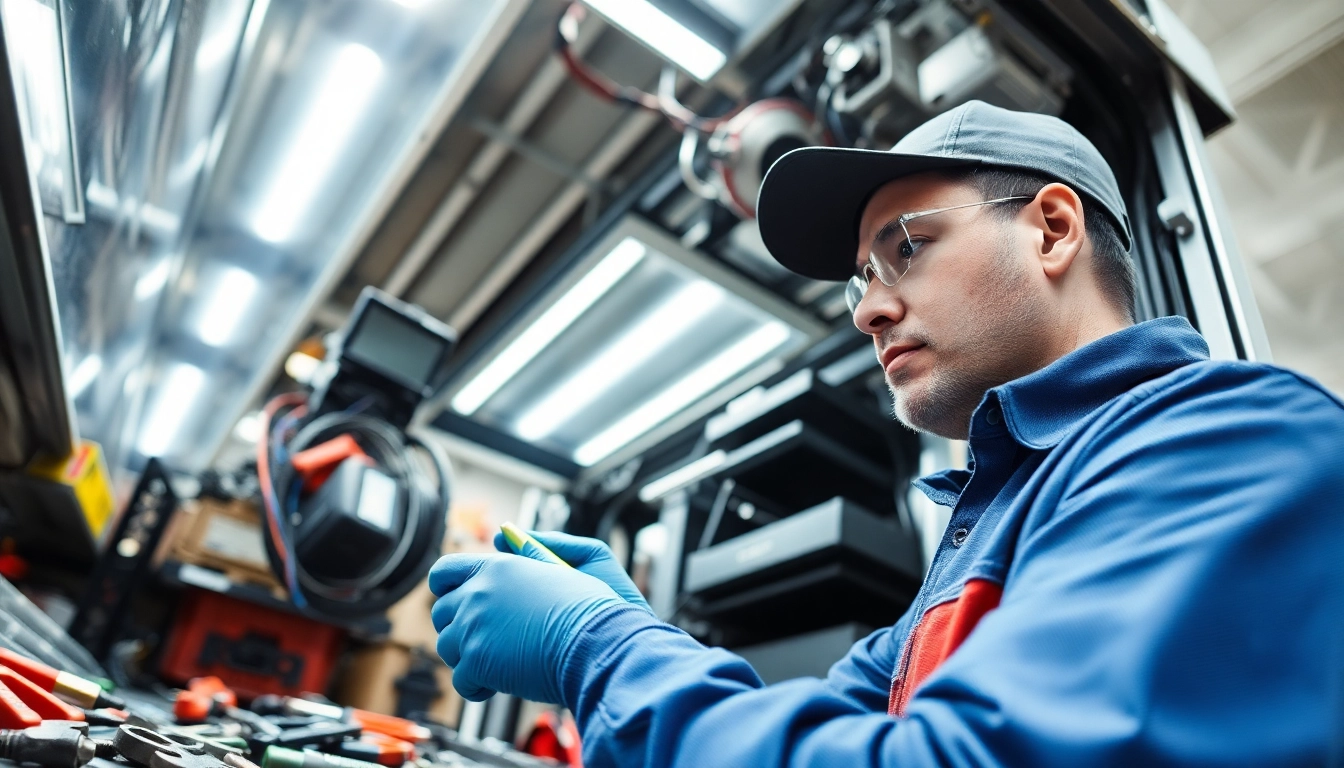Understanding Open Air Merchandisers
What is an Open Air Merchandiser?
An open air merchandiser, often referred to as an air curtain refrigerator, is a commercial refrigeration unit designed to showcase products while maintaining a controlled temperature. These units are commonly used in grocery stores, convenience stores, and other retail environments where visibility and accessibility to food or beverages are essential. Unlike traditional refrigeration units with solid doors, open air merchandisers feature an open front that allows customers easy access and encourages impulse buying. The design utilizes an air curtain that helps maintain a consistent temperature while minimizing the escape of cold air into the environment.
How Does Open Air Merchandiser Repair Work?
Repairing an open air merchandiser involves diagnosing issues with the unit’s cooling system, electrical components, or structural integrity. Often, troubleshooting begins with a visual inspection and testing of electrical connections, fans, compressors, and temperature gauges. Depending on the situation, issues may be resolved through simple adjustments or require the replacement of parts. Prior to commencing repairs, it’s crucial to ensure that the unit is unplugged to prevent electrical hazards. For more detailed assistance, resources such as the open air merchandiser repair guide can provide valuable insights.
Common Issues Faced by Open Air Merchandisers
Open air merchandisers can encounter a variety of issues that affect their performance. Some frequent problems include:
- Inadequate Cooling: This can be caused by a malfunctioning compressor, blocked air filters, or low refrigerant levels.
- Electrical Failures: Problems with wiring, blown fuses, or faulty thermostats can lead to a complete loss of power or erratic cooling behavior.
- Defrost Issues: Improper defrost cycles can result in ice build-up, obstructing airflow and reducing efficiency.
- Accessibility Problems: Damage to doors or shelves can affect product placement and visibility.
Signs Your Open Air Merchandiser Needs Repair
Identifying Performance Problems
Recognizing performance problems early can save considerable time and money. Some signs to look for include:
- Temperature Fluctuations: Frequent changes in product temperature may indicate a malfunctioning thermostat or compressor.
- Compressor Noise: Unusual sounds from the compressor may indicate mechanical issues requiring immediate attention.
- Inconsistent Product Quality: If products are not kept at the appropriate temperature, their quality may degrade, leading to spoilage.
Visual Indicators of Malfunction
Sometimes, physical signs can point to underlying issues with an open air merchandiser. These indicators may include:
- Frost or ice build-up in undesirable locations, which indicates problems with defrosting or cooling.
- Condensation on the exterior surfaces, suggesting that the air curtain may not be functioning effectively.
- Visible wear or damage to electrical components, such as frayed wires or burnt-out bulbs.
Sound and Smell Warnings to Watch For
Sounds and odors can often signal severe problems with the unit. For instance:
- Strange Noises: Clanking or grinding noises may indicate issues with the compressor or fans.
- Burning Smells: This can be a sign of overheating electrical components or burnt-out wiring, which requires immediate attention.
- Unusual Odors: Musty or foul smells may indicate decomposing product within the unit or issues related to drainage.
Step-by-Step Guide to Open Air Merchandiser Repair
Essential Tools for Repairing Open Air Merchandisers
Having the right tools on hand is crucial for effective repair work. Essential tools include:
- Screwdrivers: Both Phillips and flathead screwdrivers are needed for disassembly.
- Multimeter: This tool is vital for testing electrical components and ensuring they are functioning correctly.
- Manifold Gauge Set: Used to check refrigerant pressure and diagnose cooling issues.
- Replacement Parts: Common parts such as fans, thermostats, and compressors should be on hand for efficient repairs.
- Cleaning Supplies: including brushes and wipes to clean condenser coils and remove debris.
Repairing Electrical Components Safely
Electrical repairs are crucial to ensuring the proper functioning of an open air merchandiser. Follow these safety practices:
- Unplug the Unit: Always disconnect power before working on any electrical components.
- Use Insulated Tools: Insulated tools can help prevent electrical shocks during repairs.
- Test Voltages: Use a multimeter to verify that wires are de-energized before touching them.
Maintaining Cooling Efficiency Through Repairs
To ensure efficient cooling during and after repairs, consider these tips:
- Check Refrigerant Levels: Ensure appropriate refrigerant levels for optimal cooling performance.
- Inspect the Cooling Coils: Clean condenser and evaporator coils regularly to prevent dirt accumulation, which can burden the cooling system.
- Avoid Blockages: Keep air pathways clear to maintain a steady flow of cool air within the unit.
Preventive Measures for Open Air Merchandiser Longevity
Routine Maintenance Tips
Regular maintenance can significantly prolong the life of an open air merchandiser. Here are some tips:
- Daily Inspections: Conduct visual checks for any signs of wear, ice build-up, or leaks.
- Regular Cleaning: Schedule routine cleaning of coils, fans, and surfaces to maintain efficiency.
- Monitor Temperature Settings: Regularly verify that temperature settings remain consistent and appropriate for the products stored.
Best Practices for Equipment Usage
Using your open air merchandiser correctly can prevent many issues:
- Maintain an Adequate Stock Level: Keep the unit properly stocked to ensure air circulation and maintain temperature.
- Avoid Overloading: Overloading the unit can hamper airflow and cooling efficiency.
- Temperature Awareness: Position the unit away from heat sources to ensure optimal ambient temperature.
Scheduling Regular Professional Servicing
Even with diligent maintenance, enlisting a professional for service is advisable:
- Annual Inspections: Schedule thorough inspections and servicing to preemptively identify issues.
- Cleaning by Professionals: Professionals have the necessary tools and expertise to deep-clean hard-to-reach areas.
- Component Replacements: Allow trained technicians to handle any complex repairs, especially those involving refrigerants and electrical systems.
Finding Professional Help for Open Air Merchandiser Repair
When to Call a Technician
Identifying the right time to call for professional help is crucial. Consider contacting a technician in these situations:
- PersistentCooling Issues: If problems with temperature regulation continue despite regular maintenance.
- Electrical Problems: If there are frequent blown fuses or tripped circuits.
- Physical Damage: Visible damage to electrical components or refrigerant lines.
How to Choose a Reliable Repair Service
Selecting the right repair service can make a significant difference in maintaining your merchandiser. Look for:
- Experience and Credentials: Ensure they possess the necessary licenses and experience with open air merchandisers.
- Positive Reviews: Check online reviews and testimonials from previous customers.
- Emergency Services: A service that offers emergency repairs can be invaluable in urgent situations.
Cost Expectations for Open Air Merchandiser Repairs
Understanding costs associated with repairs can help in budgeting:
- Service Call Fees: Most technicians charge a standard fee for assessments, which may vary.
- Parts Replacement: The cost of replacement parts will depend on the specific components needed.
- Labor Costs: Labor rates typically vary by location and technician expertise.
- Preventive Maintenance Plans: Investing in a maintenance plan can help reduce overall costs in the long run.








